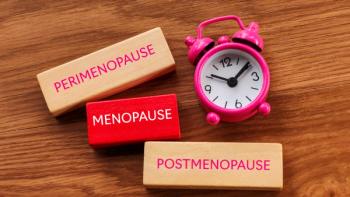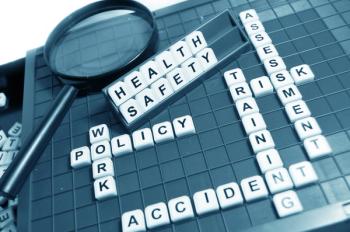
- Volume 0 0
Good Hand Hygiene Includes More Than Hands
A quick way to save 90,000 lives annually would be to teach health care workers to wash their hands often. Each year, up to 10% of acute care admissions and 25% of intensive care patients acquire one or more nosocomial infections.1 Most are surgical wound infections, catheter-associated urinary tract infections, pneumonia, or septicemia.1-3 Approximately 70% of these infections are antibiotic-resistant.1,4 Drug-resistant pathogens are flourishing and spreading to populations previously considered low-risk. For example, 11 newborns recently contracted hospital- acquired methicillin-resistant Staphylococcus aureus.5
Unclean hands often introduce contamination, causing 30% to 40% of acquired infections.1,6 Touching sterile products while compounding is the most common way to contaminate them.7 Proper hand hygiene?hand washing, using antiseptic hand washes or rubs, surgical hand antisepsis, and other agents or techniques that reduce microorganisms8?remains the cornerstone of infection prevention.
How often should pharmacy staff members wash their hands? Hand-washing frequency varies by need. Pediatric nurses wash their hands an average of 8 times hourly, whereas those in intensive care units average 20 times per hour.8 Pharmacy staff members who must use aseptic technique should wash their hands every time they enter or reenter the aseptic area.7
Factors Affecting Compliance
The Centers for Disease Control and Prevention's (CDC) original 1975 handwashing guidelines were updated in 1995 and 2002. Despite the emphasis on hand washing, most health care workers wash their hands less than half as often as they should, with some workers only 5% compliant.8
Many risk factors and excuses are associated with poor hand-washing practices (Table 18,11,12). The CDC recommends a 15-second hand washing for adequate infection control.8 Experts in pharmacy aseptic technique indicate that 30 seconds of soapy friction are needed among pharmacy workers.7 A 10-second "rinse and run," however, is common among health care workers.9,10
Infection control begins with facility design. The Academy of Architecture for Health Guidelines recommend private rooms as standard design when constructing new hospitals.13 The rationale is straightforward: private rooms reduce exposure to other patients' pathogens, minimize cross-contamination, and diminish opportunities for errors pursuant to mistaken patient identity. Hospitals that have converted to all private rooms boast impressive gains; infections declined 45% in one newly built hospital, compared with its former facility with semiprivate rooms.14 Readily accessible sinks for hand washing are a key component of their design.
Beautiful Nails, Lovely Rings
Subungual areas harbor higher bacterial concentrations than other finger areas, and these areas must be cleansed vigorously with a brush. Fashionable fingers and health care may be a recipe for infection. Longer nails are associated with higher bacterial content, and, regardless of length, artificial nails have the highest colonization.15 Several outbreaks have been traced to artificial nails.8 Current CDC guidelines recommend prohibiting artificial nails and nail extenders for staff members working with high-risk patients, especially in intensive care units and operating rooms.8,15 They also recommend nail tips less than 1/4 inch.
Gloving artificial or long nails is insufficient. Gloves decrease infection transmission risk, but they require hand washing before and after their use. Some programs have adopted universal gloving policies. All gloving procedures need to accommodate potential latex allergies and need to ensure that multiple sizes of gloves are always available.
Nail polish is controversial, because few studies address the relationship between nail polish and infection transmission. One large study, however, found higher pathogen concentrations among staff members with chipped nail polish or polish worn more than 4 days, compared with fresh, intact polish.16,17 Even with a 5-minute scrub, staff members with nail polish had higher levels of bacteria than those with short, unpolished nails.16
Findings on the role of jewelry, including watches, in transmitting infections remain ambiguous. One study reported a 10-fold increase in bacterial content on skin under rings, compared with control sites, with bacterial content increasing with the number of rings worn. Staff members wearing rings are 1.6 times more likely to remain contaminated after hand washing and 2.3 times more likely to be contaminated after using alcohol rubs, when compared with non-ring wearers.17,18 Similarly, higher bacterial content is found under watches.19
Asking staff members to remove rings, especially wedding bands, is controversial. The CDC is silent about rings, but staff members should scrub nails and under jewelry with extra attention.
Ties and Cuffs
Neckties may be professional attire. Yet, after one astute observer noticed that ties frequently touched patients, researchers found that 48% were contaminated with potentially harmful pathogens, as compared with only 10% of ties worn by security staff members.20
Cuffs also harbor pathogens. Cuffs often get wet during hand washing, creating an ideal reservoir for microorganisms. Sleeves always should be rolled up during patient contact. Some facilities have opted for short sleeves as standard uniform policy in clinical areas.17
Organizational Improvement
Numerous approaches have been used to increase hand hygiene. Evidence shows that conveniently located alcoholbased hand rubs, as an alternative to washing, increases hand hygiene compliance by as much as 70%.6,11,21 (These hand rubs should be antiseptic, not antibiotic, so as not to contribute to resistance.) One study reported that compliance doubled when alcohol-rub dispensing devices increased from 1 for every 4 beds to 1 per patient.22 Because pharmacy staff members often complain about dry hands, these rubs may be an option in some areas. Guidelines recommend that facilities promote good hand hygiene aggressively (Table 2).
Quality-improvement efforts also must enlist patient partners. The Joint Commission on Accreditation of Healthcare Organizations' Speak Up program asks patients to participate in treatment and to help prevent errors. It suggests that patients should expect caregivers' hand washing and that they should gently remind staff members to wash their hands.23
Final Thought
Overall, people are becoming more meticulous about hygiene in areas known for microbes, but they may ignore less obvious places. The average toilet seat contains 49 microbes per square inch, whereas the average computer keyboard contains 3295 microbes per square inch.24 Hands are the superhighway for microbes, and the entry ramps are the objects we touch. Good hand hygiene builds good roadblocks.
Dr. Zanni is a health-systems consultant and a psychologist based in Alexandria,Va. The views expressed are those of the author and not those of any government agency.
For a list of references, send a stamped, self-addressed envelope to: References Department, Attn. A. Stahl, Pharmacy Times, 241 Forsgate Drive, Jamesburg, NJ 08831; or send an e-mail request to: astahl@ascendmedia.com.
Articles in this issue
over 19 years ago
can you READ these Rxs?over 19 years ago
case STUDIESover 19 years ago
Compounding HOTLINEover 19 years ago
RESPy AWARDover 19 years ago
Compounding for Prenatal Patientsover 19 years ago
Prescription Monitoring Programsover 19 years ago
Patients Sue the US Government to Allow Drugs from Canadaover 19 years ago
FMEA Can Help Prevent Errorsover 19 years ago
On-line Health Care: Identifying Quality InformationNewsletter
Stay informed on drug updates, treatment guidelines, and pharmacy practice trends—subscribe to Pharmacy Times for weekly clinical insights.















































































































































































































